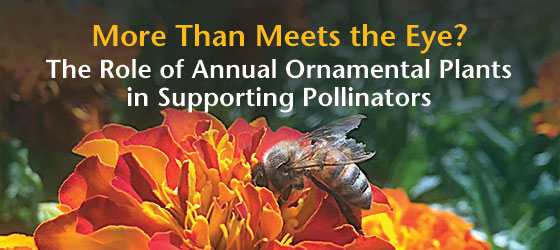Bee populations are experiencing a global decline as a result of climate change, parasites and pathogens, and pesticide exposure, as well as a lack of foraging resources due to human land use. The good news is that gardens and parks can be valuable sites for providing foraging resources to these urban pollinator communities because of their low pesticide use, complex landscapes, and protected environments.
Many home gardeners and landscapers are seeking ways to make their own green spaces more friendly to pollinators. Despite the public demand for information on how to create pollinator landscapes, little research has been conducted on which plants are best for pollinators, and the information that does exist is not usually regionally specific and may be inconsistent. More recently, researchers have begun investigating the potential of human-managed green spaces to support pollinator populations.

Published in March, this 22.5-minute webcast is part of a module in the Pollinators Hub on the
Plant Management Network (PMN). The module includes a webcast, summary webcast, audio, slide set, and study guide. These materials were produced with support from USDA-NIFA Specialty Crop Research Initiative Award #2016-51181-25399 and USDA-NIFA IR-4 Project Award #2019-34383-29973.
PMN is a cooperative, not-for-profit resource for the applied agricultural and horticultural sciences. Together with more than 80 partners, which include land-grant universities, scientific societies, and agribusinesses, PMN publishes quality, applied, and science-based information for practitioners.
